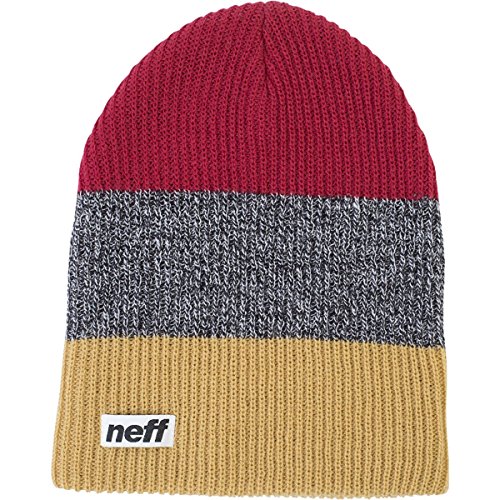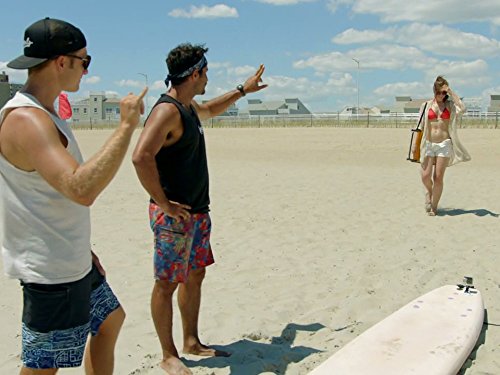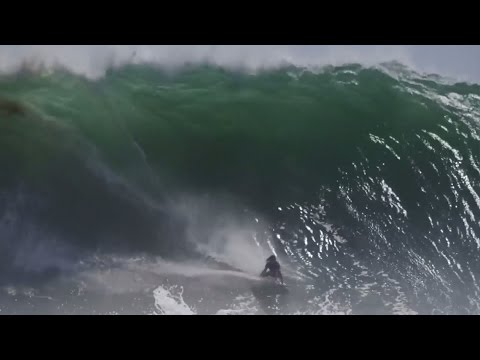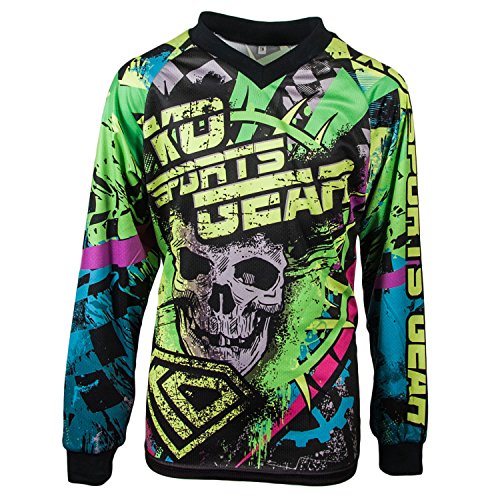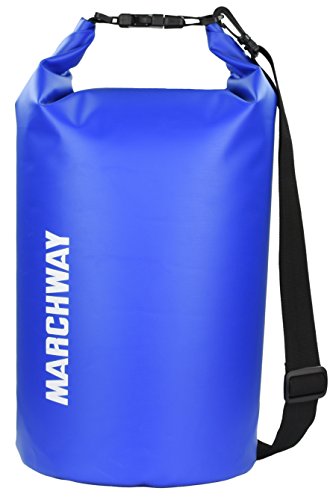neff Men’s Trio Beanie, Gold/Black Heather/Red, One Size
The trio beanie is a super soft basic beanie with three contrasting stripes and a woven neff label.
Product Features
- Super soft texture
- Basic stripe beanie
- Three contrasting stripes
- Woven neff label
Biggest Waves Ridden on a Skimboard
Videos by Exile Skimboards
https://www.youtube.com/user/ExileSkimboards
http://exileskimboards.com/
Skimboarders: Brad Domke, Bradley Norris, Jamie O’Brien
The biggest waves ever surfed on a skimboard
Videos:
Brad Domke at Teahupoo – 2016 Billabong Ride of the Year Entry – WSL Big Wave Awards
Brad Domke Skimboards Better Than You’ll Ever Surf
Brad Domke’s Puerto Platter – Exile Skimboards
Domke- ‘The Right’ and The Eye of Cyclops – Exile Skimboards
SURF-SKIM Session – Brad Domke & JOB swapping boards in Mexico
The Biggest Wave Ever Ridden On A Skimboard – Brad Domke – Exile Skimboards
Music: Wall of Anger
Countries:
Puerto Escondido – Mexico
Cyclops – Australia
The Right – Australia
Teahupoo – Tahiti
Skimboarding (or skimming) is a boardsport in which a skimboard (much like a surfboard but smaller and without fins) is used to glide across the water’s surface to meet an incoming breaking wave, and ride it back to shore. Wave-riding skimboarders perform a variety of surface and air maneuvers, at various stages of their ride, out to, and back with, the wave. Some of these are known as “wraps,” “big spins,” “360 shove-its” and “180s.” Unlike surfing, skimboarding begins on the beach by dropping the board onto the thin wash of previous waves. Skimboarders use their momentum to skim out to breaking waves, which they then catch back into shore in a manner similar to surfing. Another aspect of skimboarding is “flatland,” which involves performing tricks derived from skateboarding such as ollies and shove-its on the wash of waves without catching shore breaks. Skimboarding originated in Southern California when Laguna Beach lifeguards wanted to surf the local shorebreak that was too fast and shallow for surfboards. Skimboarding has developed since then to ride waves much like surfing, performing aerial maneuvers and pulling into the barrel of the wave.
There are many types of dangers that skimboarders can face on a daily basis. It is not uncommon to see fractures or dislocations of the lower limbs, some requiring serious medical attention. Lacerations, twisted ankles and bruises are also common, due to impacts with the board itself, or rocks, logs and other obstacles present on beaches. Hamstring injury is also common due to the fast and extreme movement of skimboarder’s leg when they run toward the water and jump on the board. Drowning amongst skimboarders is not as likely as amongst surfers due to the shallow water in which skimboarding is usually practiced. Also, due to the shallow water, cervical fracture is a very dangerous possibility when riding big waves.
A study was done in a British journal on the dangers of skimboarding, and it states, “Over a 5 month period—May to September 2003—10 patients were seen by the fracture team at the Royal Cornwall Hospitals NHS Trust. Of the 10, eight were male, with an average age 18.7 (range 12–31). There was an equal incidence of left and right sided injuries. All the injuries were closed with no neurovascular symptoms or signs. Eight were to the lower limb, all of which were fractures of the distal tibia, ankle, and mid-foot. Six patients required hospital admission, all of these injuries were from skimboarding.”[citation needed]
Many injuries that skimboarders suffer happen over a long period of time. Such injuries include: groin strain, fractures, leg pains, shin splints, etc. Some of these injuries can be prevented by stretching before and after a session.
Another foot injury that can occur is “skimboard toe”. Much like “turf toe,” it develops from overuse and can eventually break bones in your foot.
Other dangers to consider are riptides. They can be very strong in certain areas and bring a skimboarder out to sea very quickly. There have been a few incidences of skimboarders dying from drowning by being caught in a riptide.[citation needed] Many skimboarders[who?] recommend asking locals about tides and swells as well as checking tide charts if skimming in a new area. Doing so will also help avoid rocks that are hidden under waves, which are another potential cause of serious injury.
Motocross Jersey by KO Sports Gear – Skull Design (Youth Small)
Motocross Jersey from KO Sports Gear – Skull Design
This stylish KO Motocross Jersey is our first product in our Motocross line. This design was made by the same artist that makes our wrestling singlets.
Product Features
- KO THE COMPETITION: Picture your kid winning a race with this jersey on with all of the other moms and dads looking on.
- KO FEEL: This Jersey is very comfortable. Designed to be lose and fit over pads. It is made of Dri-Fit material that breathes and will not trap heat or sweat.
- KO CONSTRUCTION: Double stitched to hold up wash after wash. We use a sublimation process to infuse the ink into the material so the artwork will not fade.
- KO ARTIST: Our designs are getting recognized world-wide. We would love to give our artist credit by name, but we don’t want the competition to steal him away.
MARCHWAY Floating Waterproof Dry Bag – Protect your Items Safe, Dry, Clean from Kayaking, Rafting, Boating, Camping, Beach, Fishing (Dark Blue, 20L)
Nowadays more and more people like the outdoor water adventures like kayaking, canoeing, rafting, snowboarding, skiing, hiking across stream, camping around river, or enjoy fun of beach. During these sport adventuring, you must expect a bag which can keep all your stuff dry, clean and protect them from sand, dust, mud and snow, then our waterproof dry bag is exactly what you are looking for!
Our Dry Bag Features:
Material – Lightweight, Foldable and Endurable. Made of ultra tough 500D tarpaulin heavy duty waterproof fabric, while maintains soft and touches smooth.
Sealing – Using simple roll top closure seal system, convenient and secure, make sure everything inside the bag is dry. However we do recommend a second layer like a ziplock plastic bag for extremely sensitive items like cellphone, camera.
Craft – Bag connection part is strongly and nicely thermo welded.
Sizes & Colors – 10L and 20L for your choice, both are suitable to store your daily supplies. With attractive colors to meet your personal preference.
Carrying – With detachable and adjustable shoulder strap for different sizes people and various carry styles.
Floating – Bag will look like it is inflated after seal is closed, so it can be floated on water with you when tie on kayak.
Storage – It can be rolled and stacked when not in use, taking very little space.
Important: To ensure a watertight seal, be sure to roll down minimum 3-4 times along the top of the bag and then connect the buckle.
Size (Diameter x Height) and Weight:
10L: 7.87 x 19.30 inch, 0.66 pound; 20L: 9.25 x 22.83 inch, 0.89 pound
Enjoy your outdoors now with our dry bag, we believe it will bring you pleasant surprise!
Product Features
- Lightweight Compact and Durable: Made from ripstop tarpaulin with sturdy welded seam which is designed for years usage, tear, rip and puncture proof. Perfect for almost any extreme adventure you imagine.
- Waterproof Guarantee: Solid roll-top closure system provides secure watertight seal. Keep your gear dry in any wet situation where the bag is not fully submerged. Protect your valuables from water, snow, mud and sand.
- Easy Operation and Cleaning: Just put your gear in bag, grab top woven tape and roll down tightly 3 to 5 times and then plug buckle to complete seal, whole process is very quick. Dry sack is easy to wipe clean due to its smooth surface.
- Perfect Midsize: 10Liter and 20Liter to meet your demands on different occasions. Each bag includes an adjustable and removable shoulder strap for cross-body or shoulder carrying.
- Versatility: The dry sack can float on water after rolled and buckled, so you can track your gear easily. Perfect for boating, kayaking, paddling, sailing, canoeing, surfing or having fun on the beach.
